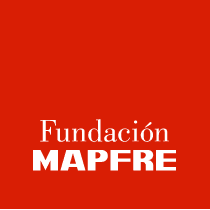
Untitled, c. 1970-1973. © Eggleston Artistic Trust.
Courtesy Eggleston Artistic Trust and David Zwirner
William Eggleston
The Mistery of the Everyday
28 September to 28 January 2024
Discover the exhibition
In his beginnings, William Eggleston was initially inspired by the work of Walker Ewans and Henri Cartier Bresson before he felt that black-and-white photography did not reflect life as he perceived it. He then decided to experiment with colour, a resource hitherto excluded from art photography and whose use was mainly limited to advertising and magazine illustration.
From 1965 onwards Eggleston immersed himself in a universe, at once strange and familiar, from which he explored the everyday life of the small towns of the southern United States, where he had been born and brought up. He then photographed everything that met his eye: grocery shops and bars, office desks, everyday objects, supermarkets, service stations, road signs, family, friends, etc., images that seem to seek the aesthetic potential of the everyday and whose true motive seems to be none other than life itself, but which at the same time offer us a unique and absorbing testimony to the profound social transformations (the multiplication of the automobile, the social function of shopping centres, etc.) resulting from the acceleration of the consumer economy.
Chronologically arranged, this wide-ranging anthology covers his early black-and-white work and his later career in colour.
Banality of ordinary
Materials
Colour
In 1935 the Agfa brand developed its Agfacolor film in Germany and Kodak introduced its Kodachrome in the United States, but neither was inexpensive, so they were not affordable for all. Kodachrome film reached its peak in the late 1960s, but was used, at least initially, for family or travel photographs, what is considered vernacular photography. From 1965 onwards, Eggleston began to photograph only in colour for artistic purposes, and he was not the only one: Stephen Shore, Joel Meyerowitz and Carlos Pérez Siquier were among the pioneers of the use of colour in the medium.
Where?
KBr Fundación MAPFRE
Avenida Litoral, 30 – 08005 Barcelona
Times
Monday (except holidays): Closed
Tuesday to Sunday (and holidays): from 11:00 a.m. to 8:00 p.m.

William Eggleston
Untitled, c. 1971-1974. © Eggleston Artistic Trust.
Courtesy Eggleston Artistic Trust and David Zwirner

William Eggleston
Untitled, c. 1970-1973. © Eggleston Artistic Trust.
Courtesy Eggleston Artistic Trust and David Zwirner

William Eggleston
Untitled, c. 1970-1973. © Eggleston Artistic Trust.
Courtesy Eggleston Artistic Trust and David Zwirner
W. Eggleston
